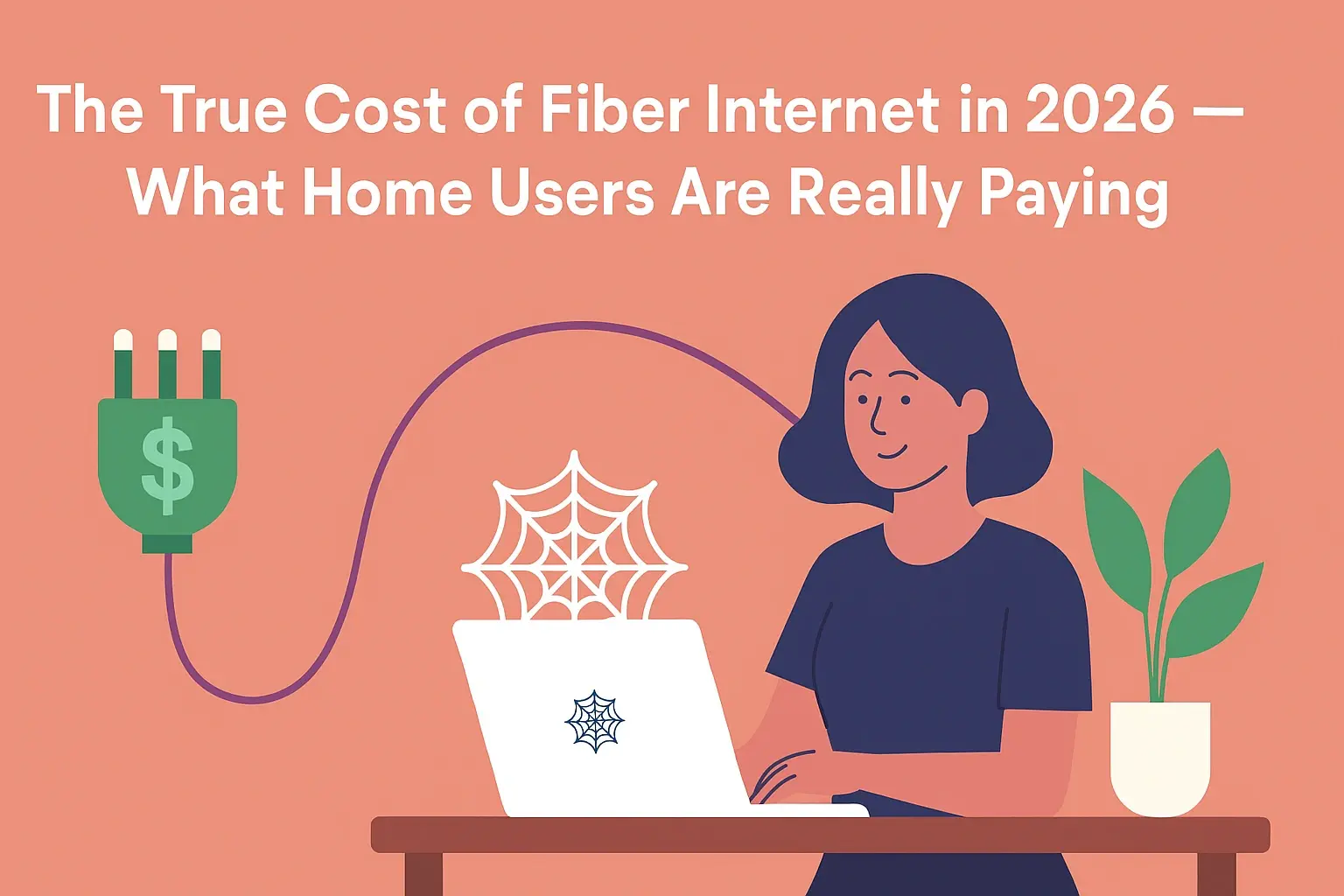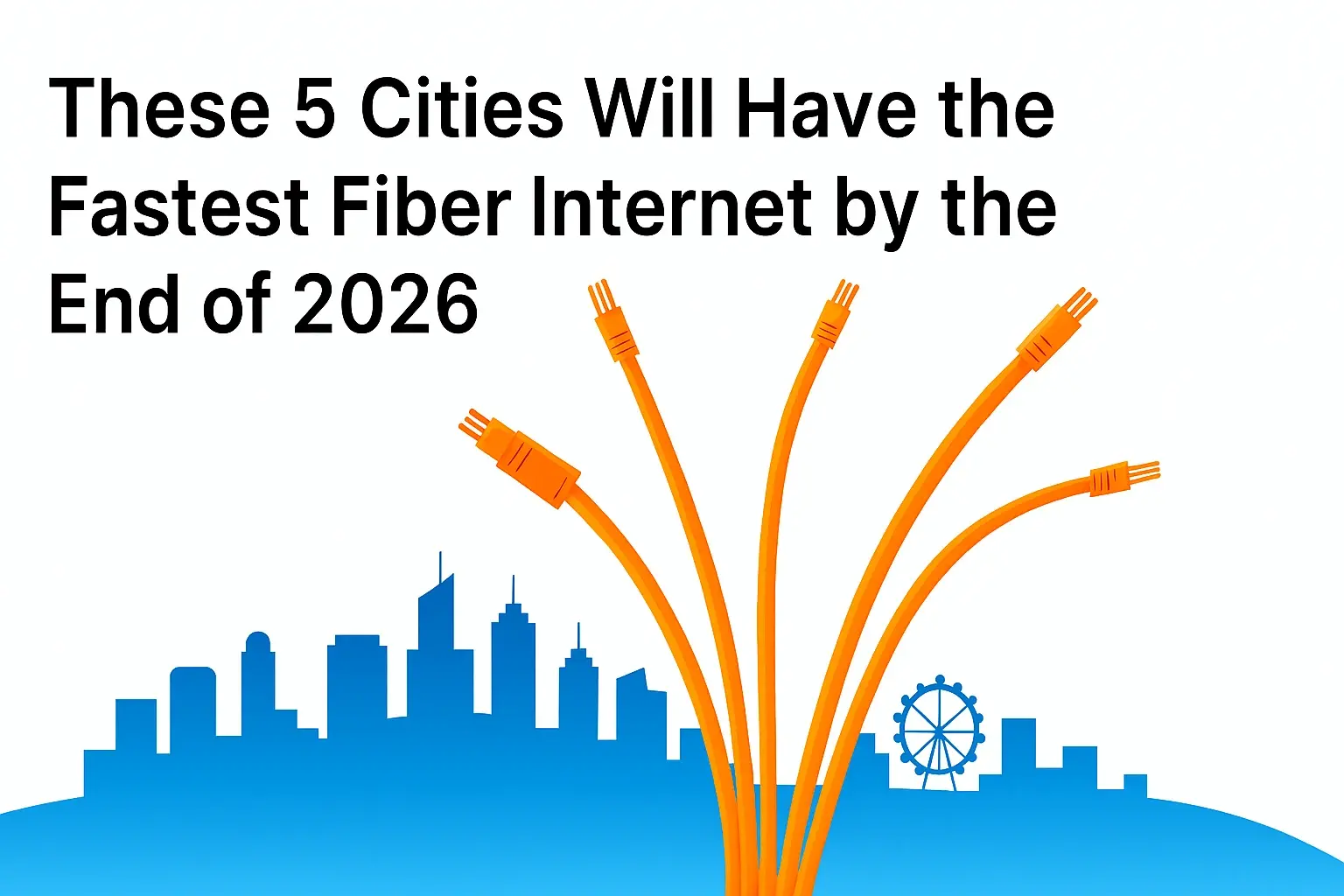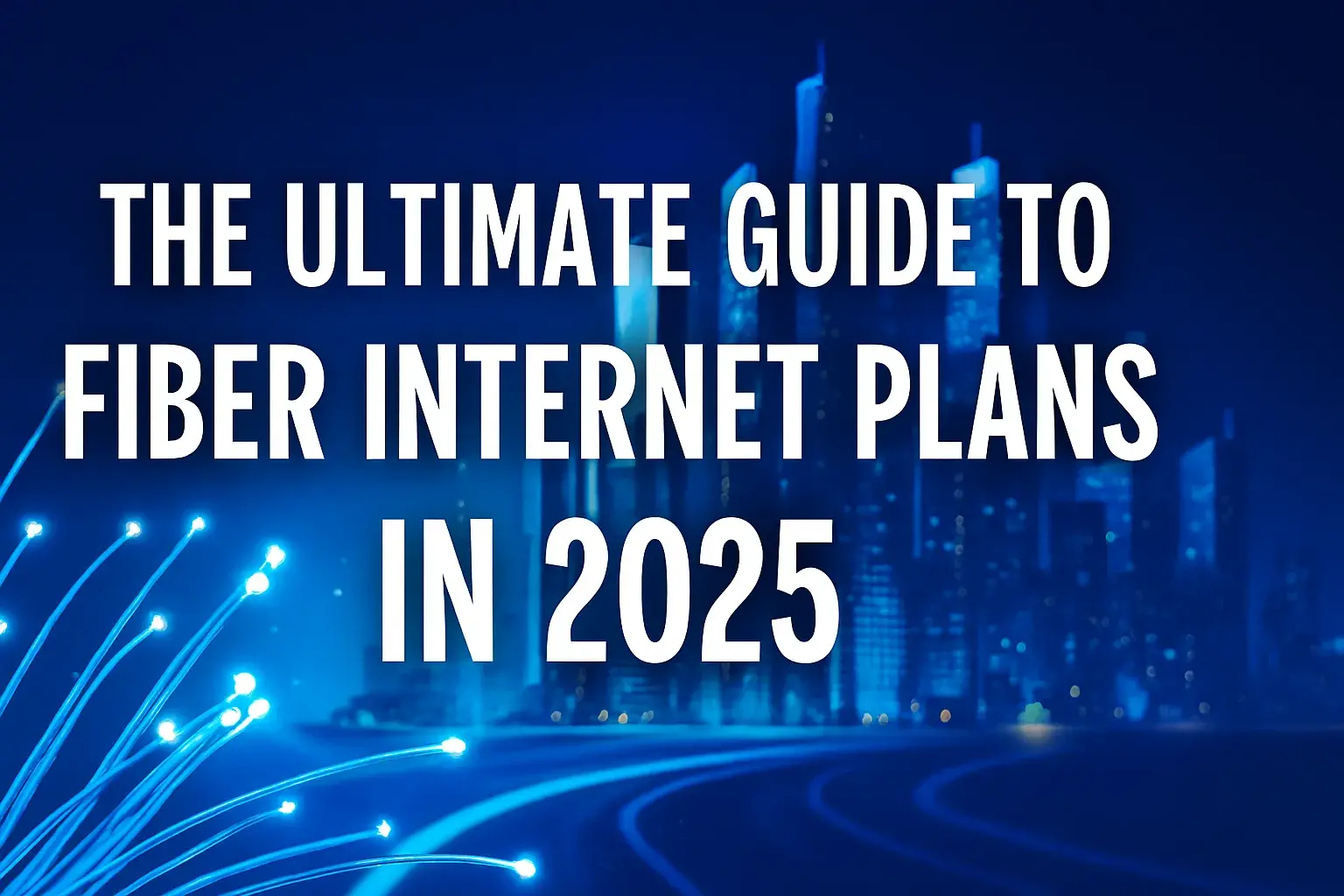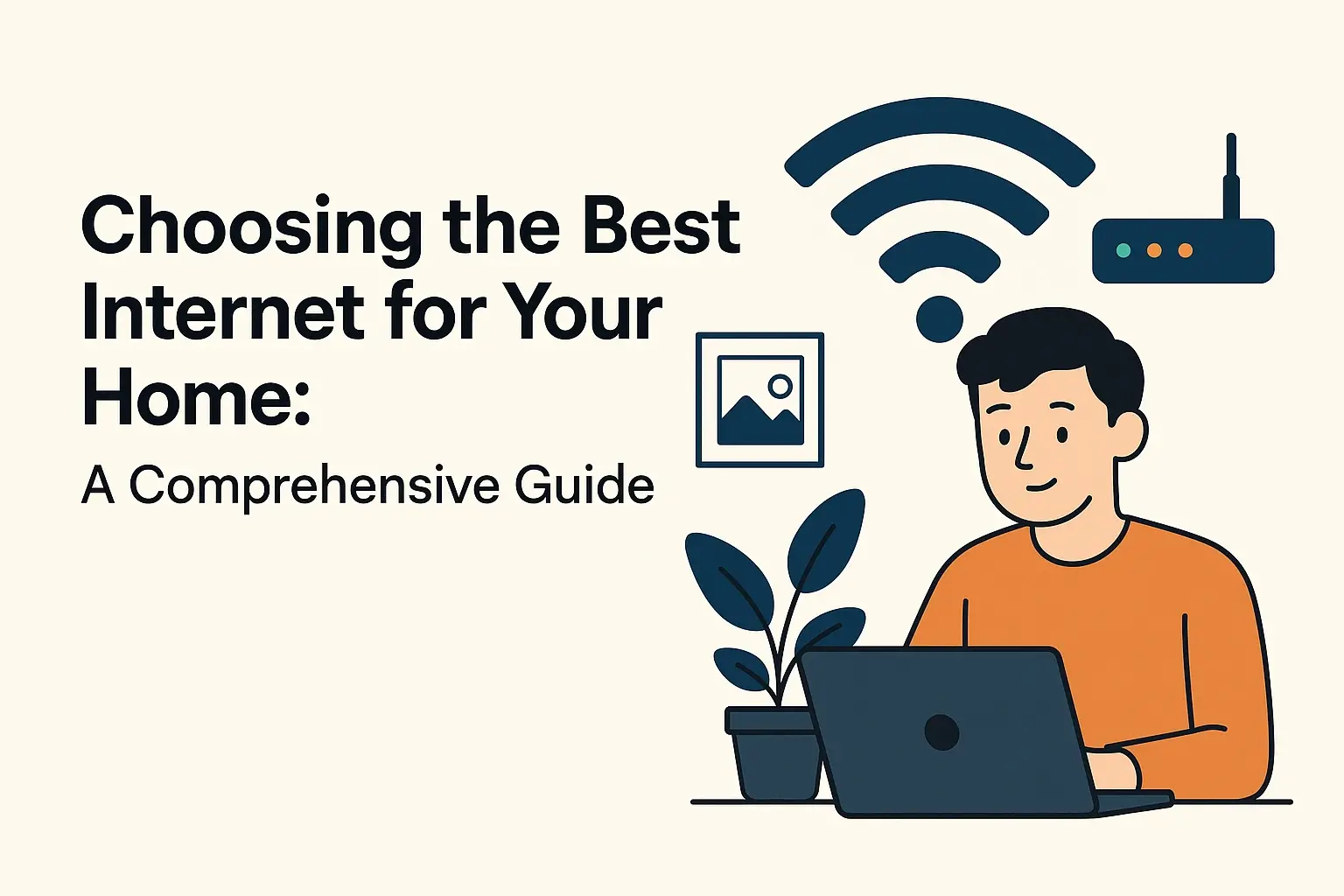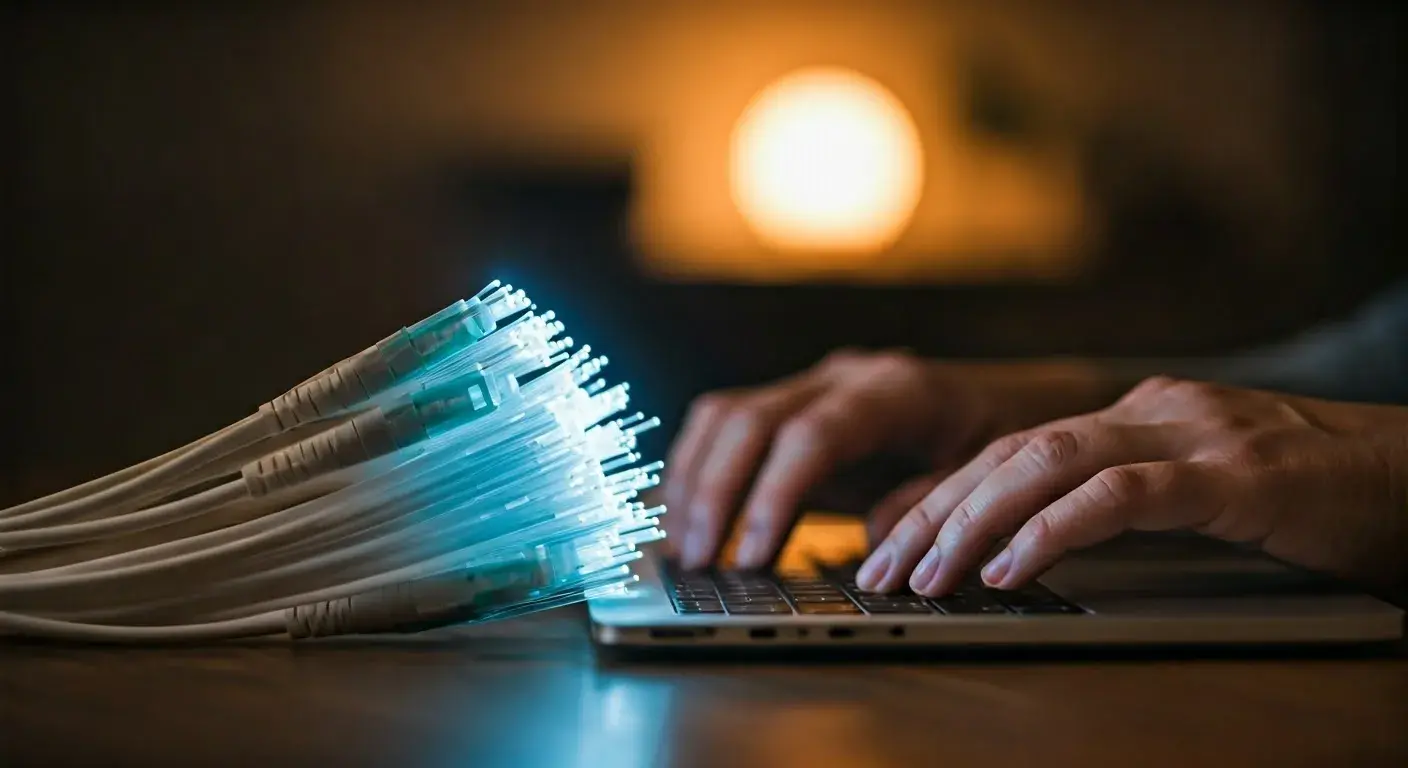What Equipment is Needed for Fiber Optic Internet?
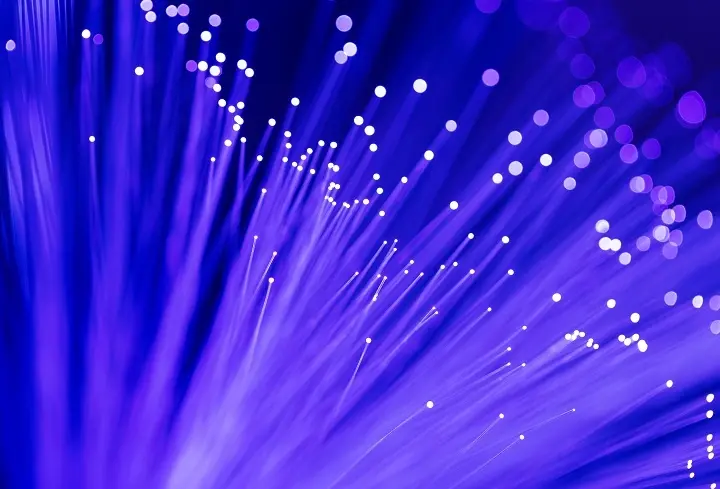
Discover the essential equipment needed for fiber optic internet installation and maintenance. This comprehensive guide covers everything from basic tools to advanced testing devices, ensuring a smooth and efficient setup for optimal performance in 2025. Understand the components and technologies involved.
Unveiling the World of Fiber Optic Internet Equipment
Fiber optic internet has revolutionized connectivity, offering speeds and reliability that traditional copper cables simply cannot match. This technological leap, however, relies on a sophisticated array of specialized equipment for its installation, maintenance, and operation. Understanding this equipment is crucial for anyone involved in deploying or managing fiber optic networks, whether it's a large-scale telecommunications provider or a small business looking to upgrade its infrastructure. As we move further into 2025, the landscape of fiber optic technology continues to evolve, with new tools and techniques emerging to enhance efficiency and performance. This article will serve as your comprehensive guide to the indispensable equipment required for fiber optic internet, from the fundamental components that make up the network to the advanced diagnostic tools that ensure its optimal functioning. We'll delve into the specifics, providing insights into the purpose and function of each piece of equipment, ensuring you have a clear understanding of what's needed to harness the full potential of light-speed connectivity. By the end of this guide, you'll be well-equipped (pun intended) to navigate the world of fiber optic infrastructure and understand the critical role each component plays in delivering the lightning-fast internet we've come to expect.
The demand for higher bandwidth and lower latency continues to surge, driven by cloud computing, 4K/8K streaming, virtual reality, and the ever-expanding Internet of Things (IoT). Fiber optics are the backbone of this digital transformation, and their deployment necessitates a specific set of tools and materials. In 2025, the global fiber optics market is projected to reach significant figures, with continued investment in broadband infrastructure, particularly in developing regions and for 5G network backhaul. According to recent market analyses, the compound annual growth rate (CAGR) for the fiber optics market is expected to remain robust, underscoring the ongoing importance of understanding the equipment involved. This growth is fueled by government initiatives promoting digital inclusion and the increasing adoption of high-speed internet services by both residential and enterprise users. The infrastructure required to support these speeds is complex, involving precise manufacturing, careful handling, and meticulous installation. Therefore, a thorough understanding of the equipment is not just beneficial, but essential for anyone in the telecommunications and IT sectors.
This guide aims to demystify the equipment landscape, breaking it down into digestible sections. We will explore the fundamental building blocks of a fiber optic network, the cutting-edge tools being utilized in 2025, practical installation steps, and strategies for effective management and future-proofing. Whether you are a technician, an installer, a network engineer, or simply a curious individual, this article will provide you with the knowledge to understand what equipment is needed for fiber optic internet and why it matters.
Core Components of Fiber Optic Infrastructure
Before diving into the tools used for installation and maintenance, it's vital to understand the core components that constitute a fiber optic network. These are the physical elements that carry the light signals, enabling high-speed data transmission. Each component plays a critical role, and their quality directly impacts network performance and longevity.
Fiber Optic Cables
The heart of any fiber optic system is the cable itself. These cables consist of thin strands of glass or plastic, thinner than a human hair, which transmit data in the form of light pulses. There are two primary types of fiber optic cables:
- Single-Mode Fiber (SMF): Characterized by a very small core diameter (around 9 micrometers), SMF allows only one mode of light to propagate. This minimizes signal dispersion and attenuation, making it ideal for long-distance transmissions, such as those used in telecommunications backbones and undersea cables. In 2025, SMF continues to be the standard for high-capacity, long-haul networks.
- Multi-Mode Fiber (MMF): With a larger core diameter (typically 50 or 62.5 micrometers), MMF allows multiple modes of light to travel simultaneously. This makes it easier to connect and less expensive to manufacture, but it suffers from modal dispersion, limiting its effective range. MMF is commonly used for shorter distances, such as within buildings, data centers, and local area networks (LANs).
The construction of fiber optic cables involves several layers: the core (where light travels), the cladding (which reflects light back into the core), a buffer coating (for protection), and an outer jacket (for environmental resistance). The choice between SMF and MMF depends heavily on the application's distance and bandwidth requirements.
Connectors and Adapters
To connect fiber optic cables to equipment or to other cables, specialized connectors are used. These connectors must be precisely aligned to ensure minimal signal loss. Common types include:
- SC (Subscriber Connector / Standard Connector): A push-pull connector with a square housing, widely used in telecommunications and networking.
- LC (Lucent Connector): A small form-factor connector, approximately half the size of an SC connector, making it ideal for high-density applications in data centers and enterprise networks. LC connectors have gained significant traction and are increasingly dominant in 2025 deployments.
- ST (Straight Tip): A bayonet-style connector, common in older installations and some industrial applications.
- MPO/MTP (Multi-fiber Push On/Mechanical Transfer): These connectors are designed to terminate multiple fibers (typically 12, 24, or more) in a single ferrule, crucial for high-density data center interconnects and parallel optics applications.
Adapters, also known as couplers or splices, are used to join two fiber optic connectors together or to connect a cable to a piece of equipment. They ensure precise alignment of the fiber ends.
Transceivers (SFP, SFP+, QSFP, etc.)
Optical transceivers are the devices that convert electrical signals into optical signals and vice versa. They are essential for connecting network devices like switches, routers, and servers to the fiber optic network. These modules plug into standardized ports on the equipment. Common types include:
- SFP (Small Form-Factor Pluggable): Supports data rates up to 1 Gbps.
- SFP+ (Enhanced Small Form-Factor Pluggable): Supports data rates up to 10 Gbps.
- QSFP (Quad Small Form-Factor Pluggable): Designed for higher bandwidth applications, supporting 40 Gbps, 100 Gbps, and even 400 Gbps (QSFP-DD). These are critical for modern data centers and high-performance computing in 2025.
The choice of transceiver depends on the required data rate, transmission distance, and fiber type (single-mode or multi-mode).
Optical Network Terminals (ONTs) / Optical Network Units (ONUs)
For residential and business end-users, the Optical Network Terminal (ONT) or Optical Network Unit (ONU) is the device that terminates the fiber optic cable from the service provider and converts the optical signal into electrical signals that can be used by your router and other devices. It's essentially the gateway to your fiber internet service.
Optical Splitters
In Passive Optical Network (PON) architectures, which are prevalent in fiber-to-the-home (FTTH) deployments, optical splitters are used to divide a single fiber optic signal into multiple signals. This allows a single fiber from the central office to serve multiple subscribers, reducing the amount of fiber needed and the cost of deployment. Split ratios can vary, commonly from 1:2 to 1:64 or even higher.
Fiber Optic Equipment Trends in 2025
The fiber optic industry is dynamic, with continuous innovation driving improvements in equipment efficiency, performance, and cost-effectiveness. As of 2025, several key trends are shaping the equipment landscape:
Increased Adoption of Higher Speeds and Density
The demand for 100 Gbps, 400 Gbps, and even 800 Gbps connections is rapidly growing, particularly in data centers and for network backbones. This is driving the adoption of higher-density connectors like MPO/MTP and advanced transceivers like QSFP-DD. The infrastructure must be capable of handling these massive data flows, requiring more sophisticated cabling and interconnection solutions.
Advancements in Testing and Measurement Tools
As networks become more complex and data rates increase, the need for accurate and efficient testing equipment becomes paramount. In 2025, we see a trend towards:
- Compact and Handheld Devices: Technicians increasingly rely on portable, all-in-one testing solutions that can perform multiple functions, such as optical time-domain reflectometry (OTDR), optical power measurement, and visual fault location.
- Automated Testing: Software and cloud-based platforms are being integrated to automate test procedures, reduce human error, and speed up troubleshooting.
- High-Resolution OTDRs: For detecting micro-bends and connector issues in high-speed networks, OTDRs with finer resolution and longer dynamic ranges are becoming standard.
- Advanced Inspection Tools: Fiber inspection scopes with automated pass/fail analysis are crucial for ensuring clean connectors, which are a common source of signal degradation.
Passive Optical Network (PON) Evolution
Technologies like XG-PON (10 Gbps PON) and NG-PON2 (next-generation PON) are becoming more widespread in 2025, offering significantly higher bandwidth to subscribers. This requires updated splitters, ONTs, and optical line terminals (OLTs) at the service provider's end that are compatible with these advanced PON standards.
Smart Fiber Management
The concept of "smart" infrastructure is extending to fiber optics. This includes fiber management systems with integrated sensors and monitoring capabilities that can detect physical disturbances, temperature changes, or signal degradation in real-time, allowing for proactive maintenance and faster fault isolation.
Sustainability and Durability
There is a growing emphasis on developing more durable and environmentally friendly fiber optic cables and equipment. This includes cables with enhanced resistance to environmental factors and manufacturing processes that minimize waste and energy consumption.
Step-by-Step Guide: Essential Equipment for Installation
Installing fiber optic internet, whether for a single home or a larger network, requires a methodical approach and the right set of tools. Here’s a breakdown of the essential equipment typically needed:
1. Planning and Site Survey Equipment
Before any physical work begins, careful planning is essential. This phase might involve:
- Measuring Tapes and Laser Distance Meters: To accurately measure cable lengths and distances for routing.
- Mapping Software/Tools: To document existing infrastructure and plan new routes.
- Cable Locators: If working near existing underground utilities, these tools help identify their locations to avoid accidental damage.
2. Cable Preparation Tools
Once the cable route is determined, the fiber optic cable needs to be prepared for termination or splicing. This involves precise work to avoid damaging the delicate fibers.
- Fiber Strippers: Specialized tools designed to remove the buffer coating and the outer jacket of the fiber optic cable without damaging the glass fiber itself. Different strippers are used for the outer jacket and the buffer coating.
- Kevlar Shears/Scissors: For cutting the strength members (like Kevlar yarn) found in many fiber optic cables. Standard scissors can damage the fibers.
- Fiber Cleaning Supplies: Crucial for removing dust and contaminants from fiber ends. This includes lint-free wipes, isopropyl alcohol, and specialized cleaning solutions. Dirty fiber ends are a primary cause of signal loss.
3. Termination and Splicing Equipment
This is where the actual connection of fibers takes place, either by splicing (fusing fibers together) or by attaching connectors.
- Fiber Cleaver: A precision tool used to create a perfectly flat, perpendicular end-face on the fiber after stripping. A clean cleave is essential for both splicing and connectorization. High-quality cleavers are critical for achieving low insertion loss.
- Fusion Splicer: This advanced machine precisely aligns two fiber ends and uses an electric arc to fuse them together. Fusion splicing provides a very low-loss, permanent connection. Modern fusion splicers are highly automated and include features like wind protection and auto-focus. This is a significant investment but essential for professional installations.
- Mechanical Splice Tool: An alternative to fusion splicing, mechanical splices use a precise alignment mechanism and an index-matching gel to join two fiber ends. They are generally faster and require less expensive equipment but may result in slightly higher loss than fusion splices.
- Connectorization Tools: For attaching connectors (like SC, LC) to the fiber end. This can involve crimping, epoxy curing, or field-installable connectors, each requiring specific tools and consumables.
4. Testing and Verification Equipment
After installation, thorough testing is mandatory to ensure the network is functioning correctly and meets performance specifications.
- Optical Power Meter (OPM): Measures the optical power (signal strength) at a specific wavelength. It's used to verify that the signal level is within acceptable limits after installation or to troubleshoot signal loss issues.
- Optical Light Source (OLS): Emits a stable light signal at specific wavelengths. When used in conjunction with an OPM, it allows for accurate measurement of insertion loss (signal attenuation) through a cable or connection.
- Visual Fault Locator (VFL): A pen-like device that emits a bright red laser light. When inserted into a fiber, the light will visibly leak out at points of high loss, breaks, or sharp bends, making it excellent for quickly identifying faults in patch panels or short cable runs.
- Optical Time-Domain Reflectometer (OTDR): This is a more advanced and crucial piece of diagnostic equipment. An OTDR sends pulses of light down the fiber and analyzes the reflected light to map the fiber's length, identify the location and magnitude of splices, connectors, bends, and breaks, and measure overall signal attenuation. Essential for troubleshooting and certifying longer fiber runs.
- Fiber Inspection Scope: A microscope used to visually inspect the end-face of fiber connectors for dirt, scratches, or damage. A clean connector end-face is critical for reliable performance. Many modern scopes offer automated pass/fail analysis.
5. Safety Equipment
Fiber optics involve working with lasers and sharp tools. Safety is paramount.
- Laser Safety Glasses: Essential to protect eyes from accidental exposure to laser light, which can be invisible and damaging. Ensure glasses are rated for the wavelengths being used.
- Gloves: To protect hands from sharp tools and glass fibers.
- Safety Cones and Signage: To alert others to work areas, especially when working in public or shared spaces.
Essential Tools vs. Advanced Diagnostic Equipment
The equipment needed for fiber optics can be broadly categorized into two groups: essential tools for basic installation and advanced diagnostic equipment for troubleshooting and certification. Understanding the distinction helps in budgeting and resource allocation.
| Feature | Essential Installation Tools | Advanced Diagnostic Equipment |
|---|---|---|
| Purpose | Preparing cables, making connections (splicing/connectorizing), and basic verification. | Detailed fault finding, performance analysis, network certification, and troubleshooting. |
| Key Items | Fiber strippers, cleavers, cleaning supplies, VFL, basic OPM/OLS, safety glasses. | OTDR, high-end OPM/OLS, advanced fiber inspection scopes, fusion splicer (can be considered both). |
| Cost | Relatively lower. Kits are available. | Significantly higher, especially for OTDRs and high-end splicers. |
| Skill Level Required | Basic to intermediate fiber optic handling skills. | Intermediate to advanced understanding of optical principles and network diagnostics. |
| Typical User | Field technicians performing new installations. | Network engineers, specialized troubleshooting teams, installation supervisors for certification. |
| Importance for 2025 | Fundamental for any fiber deployment. | Increasingly critical due to network complexity, higher speeds, and the need for rapid fault resolution to minimize downtime. The ability to precisely locate faults is key. |
For a new fiber optic installation project, a comprehensive toolkit will include most of the essential items. However, for ongoing maintenance, troubleshooting, or network certification, investing in advanced diagnostic equipment like an OTDR becomes indispensable. Many service providers and large enterprises maintain dedicated teams equipped with these advanced tools.
A fusion splicer, while expensive, bridges the gap. It's essential for creating high-quality, permanent splices, which are often required for network backbone and long-haul deployments. For FTTH, mechanical splices or pre-terminated cables might be used, but fusion splicing offers superior performance and reliability, making it a critical tool for many professional installers.
Best Practices for Fiber Optic Equipment Management
Proper management of fiber optic equipment is crucial for ensuring network reliability, extending the lifespan of tools, and maintaining a safe working environment. Here are some best practices:
- Regular Cleaning and Maintenance: Fiber optic connectors are highly susceptible to contamination. Establish a routine for cleaning all connectors, adapters, and fiber ends before and after each connection. This includes cleaning the fiber splicer's electrodes and the cleaver's blade.
- Proper Storage: Store fiber optic cables and equipment in clean, dry environments, protected from dust, moisture, and extreme temperatures. Use protective caps on connectors when not in use.
- Calibration of Test Equipment: Ensure that all test equipment, especially Optical Power Meters and OTDRs, are regularly calibrated according to manufacturer specifications. Calibration ensures accurate measurements, which are vital for network certification and troubleshooting. Many calibration services are available in 2025.
- Inventory Management: Maintain an accurate inventory of all fiber optic equipment, including tools, spare parts, and consumables. This helps in tracking assets, managing replacements, and ensuring that the right equipment is available when needed.
- Training and Certification: Ensure that all personnel handling fiber optic equipment are adequately trained on its proper use, maintenance, and safety procedures. Ongoing training is important to keep up with evolving technologies and best practices.
- Adherence to Standards: Follow industry standards (e.g., TIA/EIA, ISO) for fiber optic installation, testing, and documentation. This ensures interoperability and consistent performance across different networks and equipment.
- Visual Inspection Protocol: Implement a strict protocol for visual inspection of all fiber end-faces before connecting them. A dirty or damaged end-face can cause significant signal loss and damage other components.
- Cable Management: Use appropriate cable management systems (e.g., fiber optic patch panels, enclosures, cable trays) to organize and protect fiber optic cables, preventing stress, kinks, and accidental disconnections.
Future-Proofing Your Fiber Optic Setup
As technology advances at an unprecedented pace, it's essential to consider future-proofing your fiber optic infrastructure. This involves making choices today that will accommodate tomorrow's demands.
Choosing the Right Fiber Type
While multi-mode fiber is suitable for shorter distances, investing in single-mode fiber for new long-term deployments, even for shorter runs, can provide greater scalability and future bandwidth potential. As network speeds increase, the limitations of MMF become more apparent.
Selecting High-Density Interconnects
In data centers and enterprise environments, the trend is towards higher density. Utilizing MPO/MTP connectors and trunk cables can provide a scalable solution for future upgrades to higher speeds (e.g., 40G, 100G, 400G) without requiring extensive recabling.
Investing in Versatile Test Equipment
When purchasing test equipment, opt for devices that can handle a wide range of wavelengths, fiber types, and data rates. Modular OTDRs or devices with upgradeable software can adapt to future network technologies more easily than single-purpose units.
Planning for Scalability
When installing new fiber optic cables, consider installing more fibers than immediately required. This "dark fiber" can be activated later as bandwidth demands increase, avoiding the cost and disruption of new cable installations.
Staying Informed on Standards
The telecommunications industry is governed by evolving standards. Staying informed about upcoming standards for higher speeds, new PON technologies, and advanced network architectures will help in making informed equipment choices that remain relevant.
Conclusion
In conclusion, the deployment and maintenance of fiber optic internet rely on a diverse and specialized set of equipment. From the fundamental fiber optic cables, connectors, and transceivers that form the network's backbone, to the precise tools required for installation such as strippers, cleavers, and fusion splicers, each component plays a vital role. As we look towards 2025, the industry continues to embrace higher speeds, greater density, and more advanced testing methodologies. This necessitates a keen understanding of emerging trends like higher-bandwidth transceivers (QSFP-DD), advanced PON technologies, and smart fiber management systems. Essential tools for basic installation must be complemented by advanced diagnostic equipment like OTDRs and high-resolution inspection scopes for effective troubleshooting and network certification. Best practices in equipment management, including regular cleaning, calibration, proper storage, and ongoing training, are paramount to ensuring network reliability and longevity. By adopting a future-forward approach, choosing scalable infrastructure like single-mode fiber and high-density interconnects, and staying abreast of industry standards, organizations can future-proof their fiber optic setups. Ultimately, investing in the right equipment and maintaining it diligently is not just about connectivity; it's about building a robust, high-performance network capable of meeting the ever-increasing demands of the digital age.
For anyone embarking on a fiber optic project, whether it's an installer, technician, or network manager, a thorough understanding of the equipment discussed in this guide is indispensable. It empowers informed decision-making, efficient deployment, and effective troubleshooting, leading to a superior end-user experience. The journey into fiber optics is one of precision, specialized tools, and continuous learning, but the rewards—unparalleled speed and reliability—are well worth the investment.
